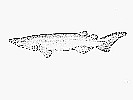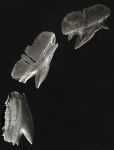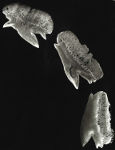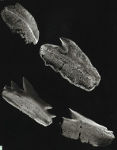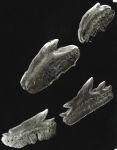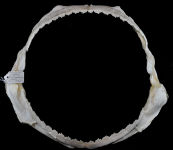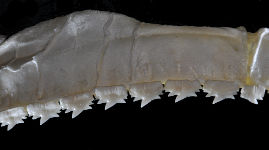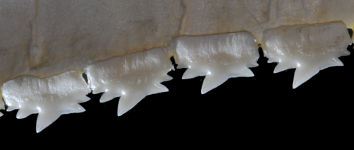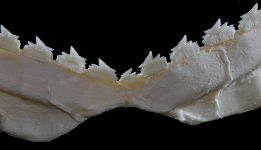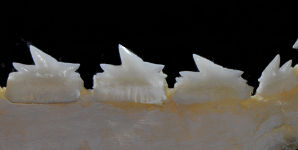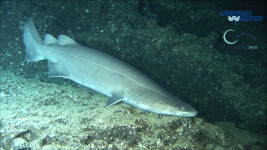Echinorhinus cookei
Pietschmann, 1928
Prickly shark
Classification: Elasmobranchii Echinorhiniformes Echinorhinidae
Reference of the original description
Neue Fischarten aus dem Pazifischen Ozean. Anzeiger der Akademie der Wissenschaften in Wien, 65(27), 297–298
Neue Fischarten aus dem Pazifischen Ozean. Anzeiger der Akademie der Wissenschaften in Wien, 65(27), 297–298
Image of the original description
No image in first description.
No image in first description.
Synonyms / new combinations and misspellings
Echinorhinus cf. cookei
Echinorhinus cf. cookei
Description :
Citation: Echinorhinus cookei Pietschmann, 1928: In: Database of modern sharks, rays and chimaeras, www.shark-references.com, World Wide Web electronic publication, Version 01/2026
Please send your images of "Echinorhinus cookei" to info@shark-references.com
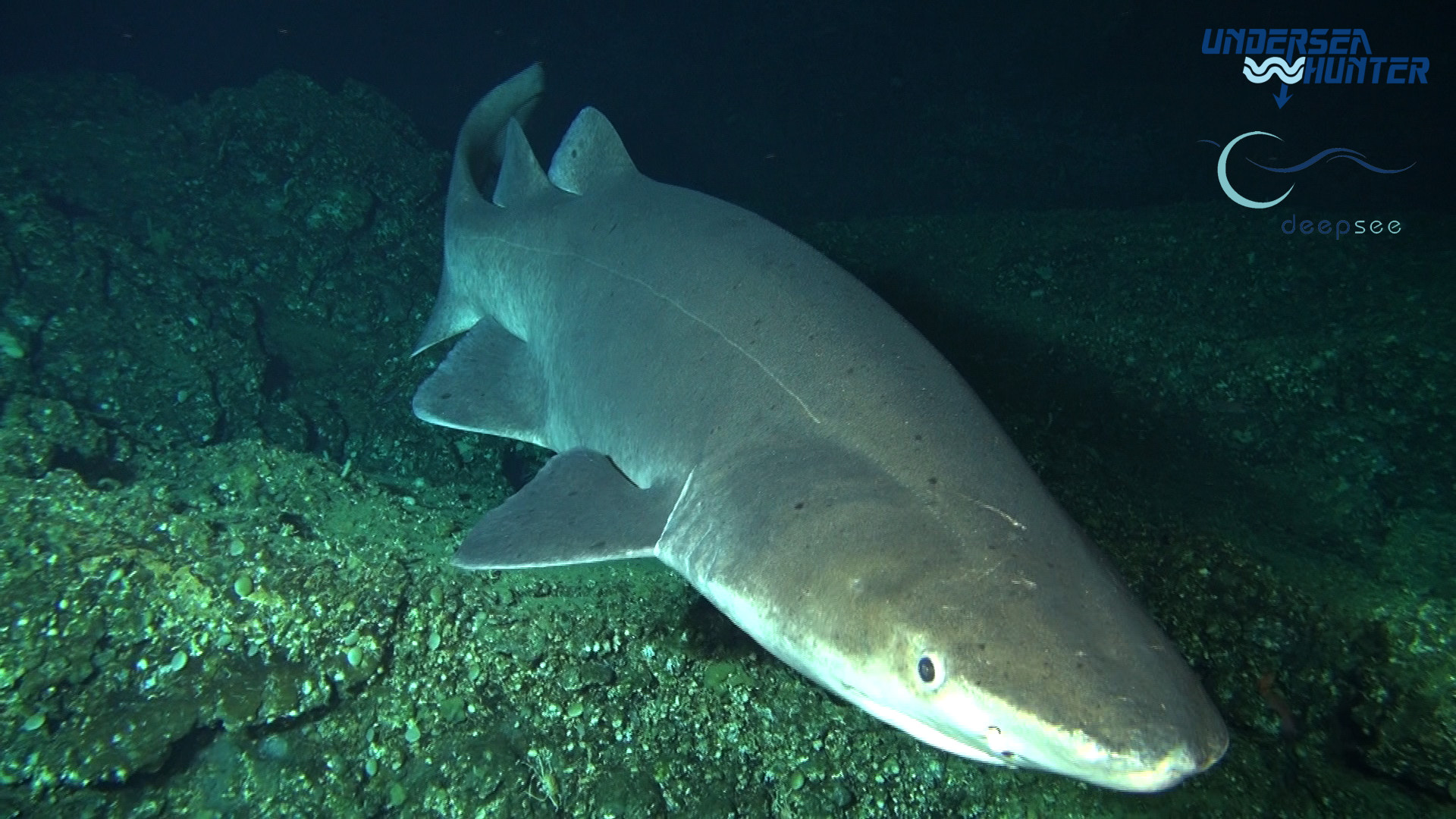
Echinorhinus cookei Pietschmann, 1928, Isla del Coco National Park between 2010 and 2019 © Undersea Hunter Group

Echinorhinus cookei Pietschmann, 1928, Isla del Coco National Park between 2010 and 2019 © Undersea Hunter Group
Common names
 Tiburon negroespinoso,
Tiburon negroespinoso,  Tiburón espinoso negro,
Tiburón espinoso negro,  Tiburón negro,
Tiburón negro,  Tiburón negro espinoso,
Tiburón negro espinoso,  Squale bouclé du Pacifique,
Squale bouclé du Pacifique,  Cooks bramble shark,
Cooks bramble shark,  Prickly shark
Prickly shark
 Tiburon negroespinoso,
Tiburon negroespinoso,  Tiburón espinoso negro,
Tiburón espinoso negro,  Tiburón negro,
Tiburón negro,  Tiburón negro espinoso,
Tiburón negro espinoso,  Squale bouclé du Pacifique,
Squale bouclé du Pacifique,  Cooks bramble shark,
Cooks bramble shark,  Prickly shark
Prickly shark
Short Description
The prickly shark Echinorhinus cookei has thorn-like denticles on body which are moderately large (single denticles up to about 4mm in basal diameter in adults), numerous, regularly distributed, with scalloped basal margins, and never fused into compound plates. Grayish brown in color, with black distal fin margins; white around mouth and on ventral surface of snout. Tooth count 21-23/20-22. Total vertebrae 89; precaudal 59. As with the other member of the family Echinorhinidae, it has a relatively short snout and stout body; two small spineless dorsal fins, close together, towards posterior part of body and originating behind pelvic fin origin. No anal fin and subterminal notch on caudal fin. Small spiracles, very short labial furrows and teeth on both jaws alike, with a central oblique bladelike cusps with up to 3 cusplets on each side (absent in juveniles) [518] [1388].
The prickly shark Echinorhinus cookei has thorn-like denticles on body which are moderately large (single denticles up to about 4mm in basal diameter in adults), numerous, regularly distributed, with scalloped basal margins, and never fused into compound plates. Grayish brown in color, with black distal fin margins; white around mouth and on ventral surface of snout. Tooth count 21-23/20-22. Total vertebrae 89; precaudal 59. As with the other member of the family Echinorhinidae, it has a relatively short snout and stout body; two small spineless dorsal fins, close together, towards posterior part of body and originating behind pelvic fin origin. No anal fin and subterminal notch on caudal fin. Small spiracles, very short labial furrows and teeth on both jaws alike, with a central oblique bladelike cusps with up to 3 cusplets on each side (absent in juveniles) [518] [1388].
Distribution
Western Pacific: Japan [1388], Taiwan, Palau, Australia [1388] and New Zealand. Eastern Pacific: Hawaii, USA, Gulf of California, and from Costa Rica to Peru and Chile [544]. Also reported in Nicaragua [20071]. Source: www.gbif.org
Western Pacific: Japan [1388], Taiwan, Palau, Australia [1388] and New Zealand. Eastern Pacific: Hawaii, USA, Gulf of California, and from Costa Rica to Peru and Chile [544]. Also reported in Nicaragua [20071]. Source: www.gbif.org
Human uses
fisheries: minor commercial; price category: not marketed/unknown; price reliability:
fisheries: minor commercial; price category: not marketed/unknown; price reliability:
Biology
Presumably ovoviviparous [1388] with up to 114 in a litter [578].Distinct pairing with embrace [17086]. Size at birth 40-45 cm. Some males mature by 198 cm; females mature between 250 and 300 cm [1388]. Found on the continental shelf and slope (Ref. 75154).
Presumably ovoviviparous [1388] with up to 114 in a litter [578].Distinct pairing with embrace [17086]. Size at birth 40-45 cm. Some males mature by 198 cm; females mature between 250 and 300 cm [1388]. Found on the continental shelf and slope (Ref. 75154).
Remarks
shark-references Species-ID=2064;
copyright by: Undersea Hunter Group
shark-references Species-ID=2064;
copyright by: Undersea Hunter Group









